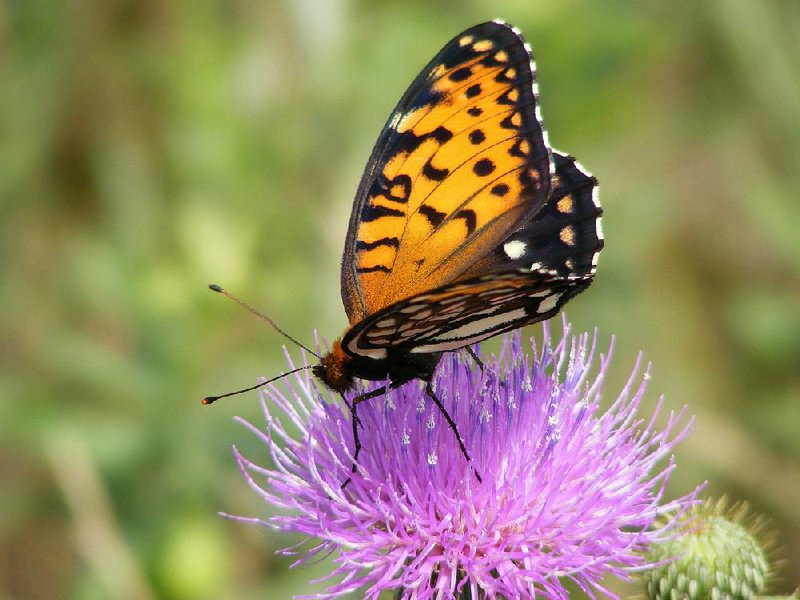WASHINGTON -- The U.S. Fish and Wildlife Service is considering adding a butterfly found in Arkansas to the endangered-species list, the agency announced Thursday.
The service will now gather scientific and commercial information on the status of the orange and black regal fritillary to decide whether it should be listed as threatened or endangered or remain unprotected.
"We want to get the most comprehensive picture of this species' status as possible," said service spokesman Jennifer Strickland.
The 21/2 inch- to 41/2 inch-long butterfly is similar in color and markings to the monarch butterfly, with orange, black lined wings and spots.
The butterfly is thought to live in as many as 31 states and Washington, D.C., but is most common in the Great Plains states -- particularly Kansas -- where their home, the tall prairie grass, is more plentiful, according to the service. While the adult butterfly eats nectar from a variety of flowers, including milkweed and thistles, the larval form of the regal fritillary eats only violets.
The service's review of the butterfly came in response to a 2013 petition from Denver-based environmental advocacy group WildEarth Guardians. The group's petition shows that the regal fritillary has been found in Benton, Pulaski and Washington counties and calls the Arkansas population "critically imperiled."
Strickland said it may live elsewhere in the state, but the service isn't sure.
"We have a lot more to learn about its range," she said.
Over the next year or so the agency will gather information about the butterfly's biology; population trends; habitat requirements; genetics; historical and current range; historical and current population levels; and past and ongoing conservation measures.
People with knowledge of the regal fritillary can send information to Justin Shoemaker at (309) 757-5800 ext. 214 or [email protected].
"We want to get the best available science," Strickland said. "We are really looking for anybody who knows anything."
This is the fifth time the Fish and Wildlife Service has considered listing the butterfly as an endangered species since 1984. Thus far, it has not received federal protection.
An endangered species is one in danger of extinction, according to the wildlife service's website. A threatened species is likely to become endangered within the foreseeable future.
The Endangered Species Act of 1973 put the wildlife service in charge of conserving the ecosystems of endangered and threatened species and preventing the extinction of plants and animals.
The service's website lists 36 endangered or threatened species in Arkansas, including several types of fish, crayfish, mussels and bats. The U.S. government recognizes more than 2,200 endangered or threatened species.
There are more than 400 species in the Southeast being considered for inclusion as endangered or threatened species, many of which come from petitions filed by wildlife groups, Strickland said.
Some of those designations have sparked fierce opposition, including the recent fight over which Arkansas streams would be deemed "critical habitat" for two freshwater mussels. The service ended up reducing the scope of the habitat.
Metro on 09/18/2015

